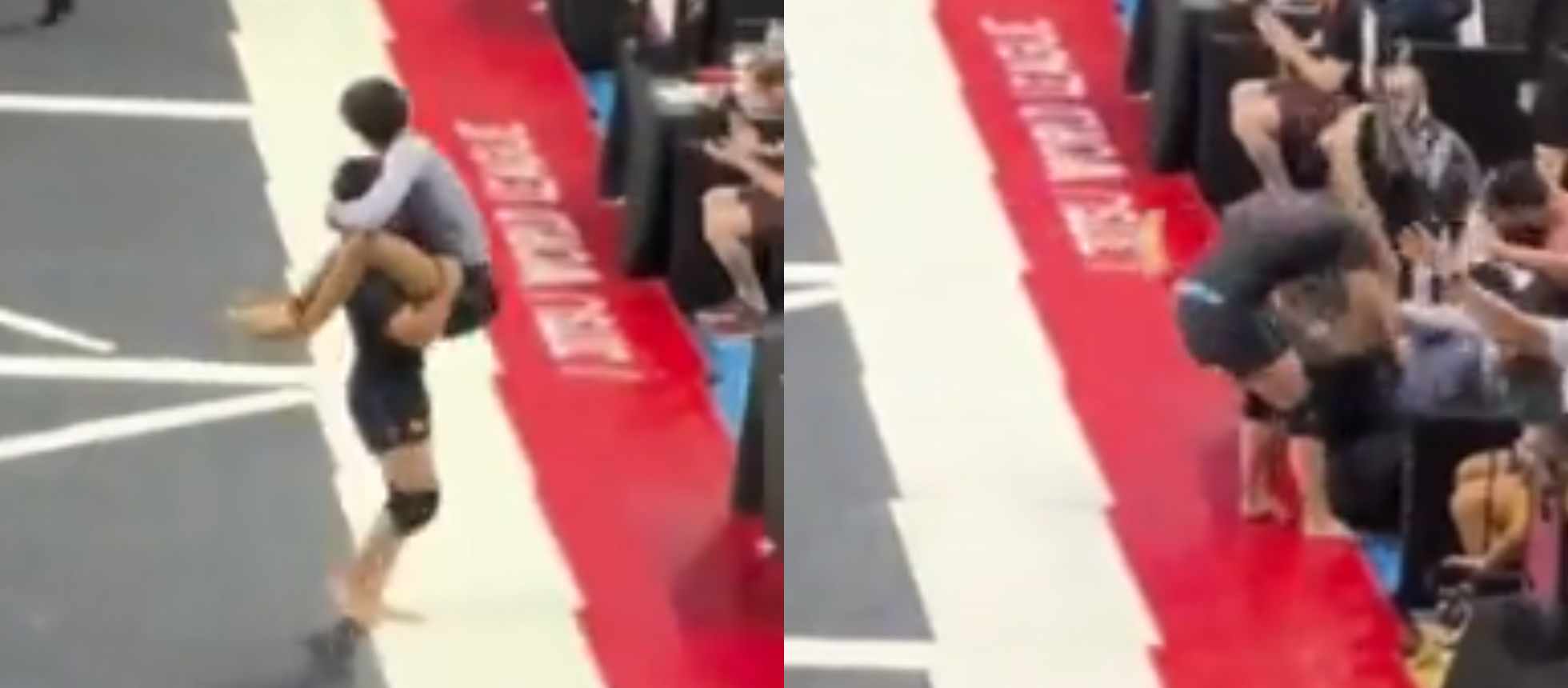BJJ, with its diverse rulesets, often becomes a subject of contention within the martial arts community. The absence of a unified ruleset has been seen as a hurdle preventing the professional sport of BJJ from gaining wider acceptance among audiences.
The recent UFC FP Invitational 4 highlighted this issue, featuring a staggering four different rulesets on the card. Such a display underscores the inherent challenges faced in achieving consistency across the sport.
However, there is one aspect that most rulesets agree upon: the prohibition of slamming opponents. Slamming, where a competitor forcefully throws their opponent to the ground, is strictly prohibited in the majority of BJJ competitions, with severe penalties for violators.
ADCC stands as an exception to this norm. ADCC allows slams if they are utilized as a means to escape from a submission. While this deviation from the standard ruleset offers an intriguing dynamic, it also introduces significant risks.
Undoubtedly, slams can pose great danger to a professional’s career and even result in knockouts. Despite the efforts of many BJJ promotions to enforce strict penalties for slams, there are still instances where such actions go unpunished. One notable incident involved Flograppling and the late Orlando Sanchez, who slammed his opponent during a competition without facing any repercussions, sparking controversy.
Recently, another alarming incident captured the attention of onlookers. What made matters worse was that this was not even a professional competition, further casting doubt on the adherence to regulations.
In a viral video, a competitor can be seen executing a WWE-style slam, forcefully propelling his opponent through the judges’ table. Such behavior is not only obnoxious but also carries grave consequences for the individual being slammed as well as the sport of BJJ as a whole.
While injuries are an unfortunate reality in BJJ, incidents that go beyond the boundaries defined by tournament guidelines can expose both the competitor and the tournament organizer to legal liabilities.
In the quest for wider recognition and acceptance, BJJ must navigate the challenges posed by divergent rulesets, prioritizing safety, professionalism, and a unified approach that appeals to both participants and audiences.

